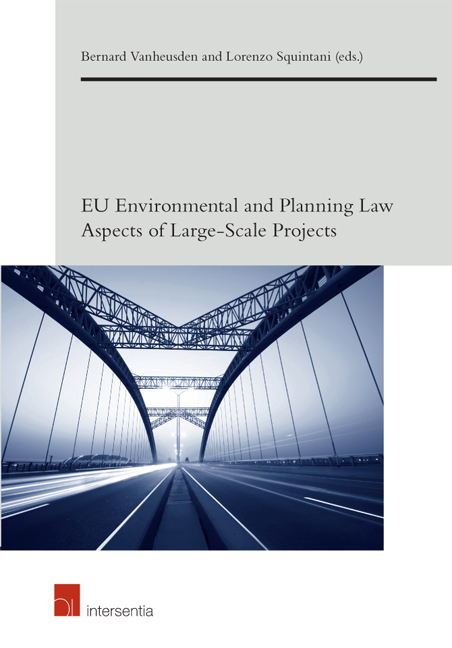Book contents
- Frontmatter
- Contents
- Introduction
- Part I General
- Part II Public Participation
- Part III Environmental Impact Assessment
- Chapter 8 Trans-Boundary Environmental Impact Assessment in Cross-Border Oil and Gas Pipelines: What Lessons Can Be Learned from the Espoo Convention and the EU EIA Directive
- Chapter 9 Environmental Impact Assessment to Support Marine Innovation: The ‘Rochdale Envelope’ and ‘Deploy & Monitor’ in the UK's Ocean Energy Industry
- Part IV Water
- Part V Nature
- Part VI Land Use
- Conclusion: Reconciling Conflicting Values: A Call For Research on Instruments to Achieve Quasi-Sustainability
Chapter 8 - Trans-Boundary Environmental Impact Assessment in Cross-Border Oil and Gas Pipelines: What Lessons Can Be Learned from the Espoo Convention and the EU EIA Directive
from Part III - Environmental Impact Assessment
Published online by Cambridge University Press: 21 September 2018
- Frontmatter
- Contents
- Introduction
- Part I General
- Part II Public Participation
- Part III Environmental Impact Assessment
- Chapter 8 Trans-Boundary Environmental Impact Assessment in Cross-Border Oil and Gas Pipelines: What Lessons Can Be Learned from the Espoo Convention and the EU EIA Directive
- Chapter 9 Environmental Impact Assessment to Support Marine Innovation: The ‘Rochdale Envelope’ and ‘Deploy & Monitor’ in the UK's Ocean Energy Industry
- Part IV Water
- Part V Nature
- Part VI Land Use
- Conclusion: Reconciling Conflicting Values: A Call For Research on Instruments to Achieve Quasi-Sustainability
Summary
INTRODUCTION
By now, most people are aware of the critical issue of supplying energy to sustain the daily life of contemporary societies. Economic Growth requires increasing amounts of energy. There are only few options available for transporting crude oil and natural gas over long distances. Pipelines are one of the most common means of transporting crude oil and natural gas. Cross-border oil and gas pipelines play an important role in the global energy trade, specifically in Europe. Over long distances, many pipelines traverse international borders to reach their final destinations. As a matter of fact, Europe imports natural gas mainly via pipelines (80%). Crude oil, on the other hand, is mainly shipped by tankers and only 20% is imported through pipelines. Hence, there are many pipelines transporting natural gas, oil, and other hazardous liquids across Europe. The EU's dependency on the pipelines as an important means for transporting oil and gas cannot be under-estimated.
Pipelines carry gas and oil across long distances usually from processing facilities to distribution centres or storage facilities. Pipelines are often used to export gas and oil from supplier countries to consumer countries, thus becoming cross-border pipelines. Cross-border pipelines usually cross the borders of more than two countries. In spite of the economic prosperity of pipelines, substantial environmental risks are created as a result of the construction and operation of oil and gas pipelines. In addition, cross-border pipelines pose additional structuring challenges. This is mainly because some level of governmental intervention is often needed to make the project viable. Parties involved in such projects mostly seek to avoid political and economic turbulence in transporting oil and gas via pipelines. They usually try to prevent pipeline accidents and in the case of an accident, they try to minimise the harm, which has been caused, by the most appropriate means. Parties involved at both levels of government and private sponsors often conclude intergovernmental agreements as well as commercial contracts in order to address any issue that may arise during the operation and construction of a proposed pipeline.
The transportation of oil and gas via pipelines may result in trans-boundary damage to the neighbouring states. Indeed, trans-boundary damage may arise from the operation of the cross-country as well as cross-border pipelines.
- Type
- Chapter
- Information
- Publisher: IntersentiaPrint publication year: 2016



